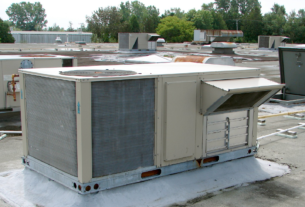Between making sure the property is well-maintained, dealing with tenants, and handling any emergency, it’s easy to forget about something as important as fire protection.
Any business must have proper fire protection systems and regulations in place. But failing to install or maintain it can be disastrous – not just for your building but also for you and your tenants. So why take the risk?
There are two main types of protection systems when it comes to fire safety: Active and Passive. Both have their benefits, but it’s important to understand the big difference between Active and Passive Fire Protection before deciding which is suitable for your building.
What are the key differences between Active and Passive Fire Protection? Keep reading to find out!
What is Active Fire Protection?
Active Fire Protection (AFP) is a system designed to actively detect and fight fires before they have a chance to spread. Active Fire Protection systems can be manual or automatic.
Common AFP systems are smoke detectors that activate an alert or an automated sprinkler that respond to a rise in temperature. Automated or digital fire alarm systems are also considered Active Fire Protection methods.
The most common manual methods are fire extinguishers or even firefighters, are all considered Active Fire Protection systems as they use a variety of foam, water, and salvage and overhaul techniques to save lives and reduce property loss.
Here are some examples of Active Fire Protection system equipment:
- Fire Extinguisher
- Fire blankets
- Sprinkler
- Smoke alarms
- Fire hose reels
- Fire hydrant
How Does Active Fire Protection Work?
Active Fire Protection systems can have roles throughout all stages of a fire. They can begin with detection, which takes place using sensors that detect heat, smoke, or flame and send a signal through an alarm which means to evacuate the building and dispatch the fire department.
Then they move to suppression, where they perform a physical action to attempt to disrupt the fire’s cycle and stop it from spreading. This requires direct action, such as fire extinguishers, or automatically with direct or indirect release systems.
Lastly, Active Fire Protection systems can assist during and after a fire with ventilation to keep exits clear, keeping evacuation routes smoke-free to reduce hazardous atmospheric conditions as people attempt to exit a structure.
What are Passive Fire Protection Systems?
Passive Fire Protection (PFP), on the other hand, is a system used to protect a building or structures of a building from the effects of fire. It is designed to protect and prevent the spread of fire, smoke, and heat and provide a safe environment for occupants to evacuate.
PFP measures are important in ensuring the safety of a building and its occupants. In fact, it is an essential part of any fire safety strategy and can help protect people and property in the event of a fire.
Passive Fire Protection systems equipment include:
- Fire-resistant walls
- Fire-resistant steel doors
- Intumescent paint
- Fire Curtains
- Fire and smoke dampers
How Does Passive Fire Protection Work?
Passive Fire Protection (PFP) systems are often built into the building’s structure.
A few examples are especially-rated firewalls, fire curtains and dampers, and fire-resistant doors. Passive Fire Protection is highly prescribed for high rise buildings, commercial and complexes.
This system doesn’t require power to operate, so it can’t be affected by power outages. Instead, it preserves the steel and the structure so that fire crews can safely enter to extinguish the fire whilst occupants can safely get out. But the Passive Fire Protection system is more than just the protection of steel beams. It can include penetrations, barriers, walls and more.
Here are some benefits of Passive Fire Protection:
- Prevent the spread of smoke, heat, and fire by containing it in a single compartment;
- Ensuring that people in the building have sufficient time to evacuate and secure their exit routes;
- Help structural steel maintain its strength and integrity when exposed to heat; and
- Prevent damage to the structure’s assets and form, in general.
Active vs. Passive Fire Protection: Which is better?
For your building to be protected to the highest possible standard, you will need a combination of both systems.
Active and Passive Fire Protection has its own role in attaining a safer environment. Active systems like sprinklers and extinguishers can do a great job of suppressing a fire, but by the time these methods are deployed, the fire can spread far beyond what the eye can see.
On the other hand, with the Passive Fire Protection system in place, fire-resistant construction can lessen the undetected spread of fire in voids and make it more difficult for the fire to penetrate the next area. This gives occupants more time to escape, the active systems more time to work, and the fire department more time to respond.
While the two systems are different, they can be used together to great effect. By understanding your building and its people, you can take appropriate actions to keep everyone safe. Both of these systems are valuable tools for protection and prevention – so make sure you’re taking advantage of them!





